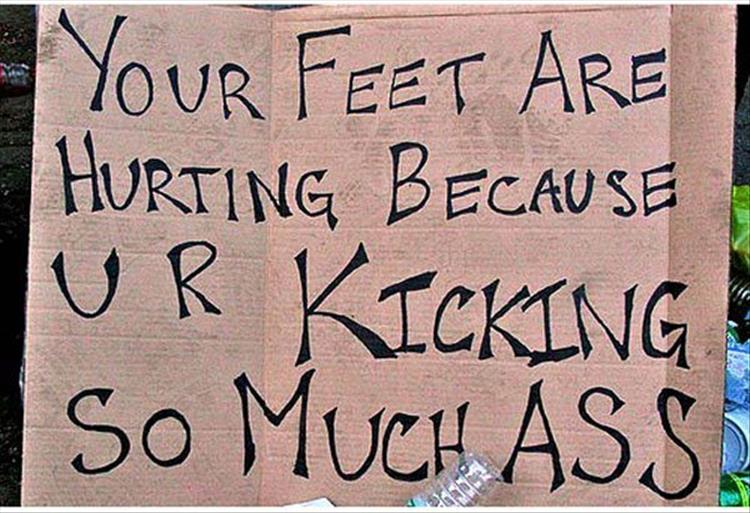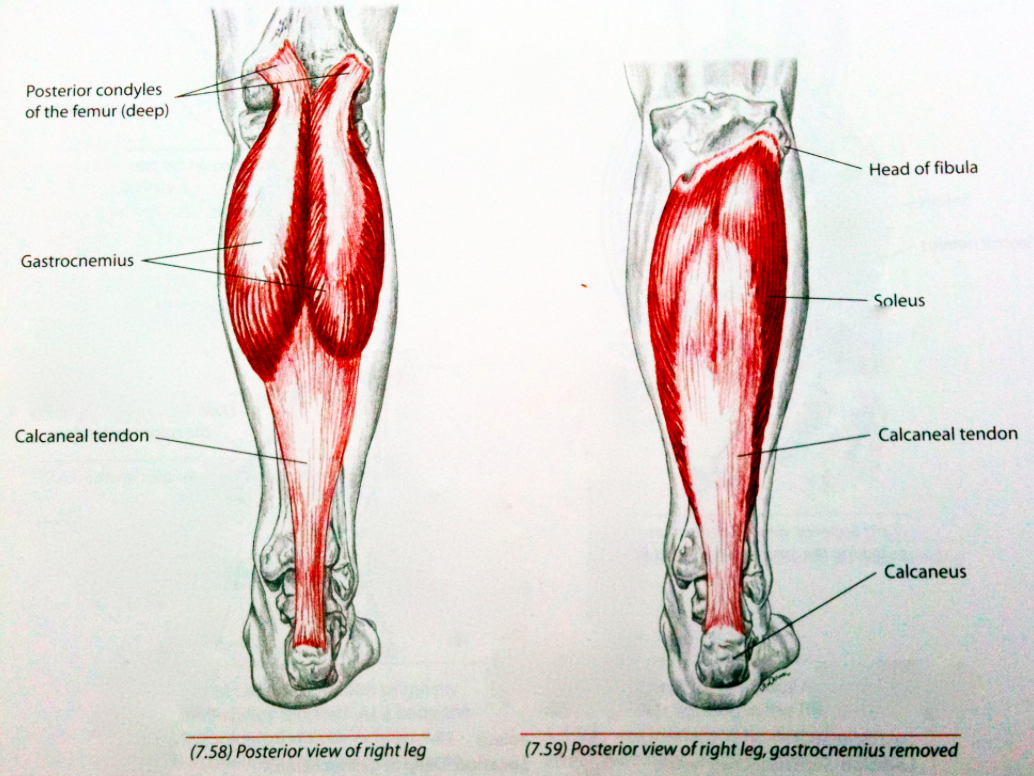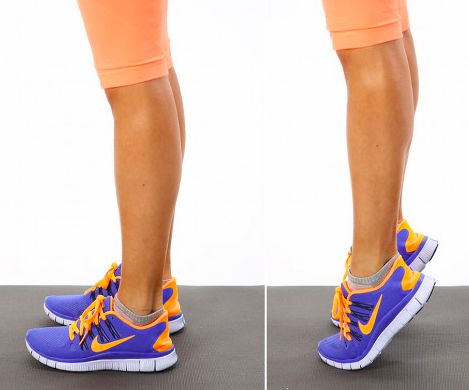Here’s a nifty body feature that you may not know about.
Only a Runner Doesn’t Laugh at the Word “Fartlek”
Signed up for the Marathon? Been training hard. My hat goes off to you, starting and keeping up with a regime like that is no easy feat, so good on you.
Now that you're deep in training mode all those wonderful sore spots and niggles will be rearing their ugly head(s).
Keeping on top of those painful spots is not only smart but will literally get you where you need to be faster. Muscles move better and faster when they are healthy - fact.
To get your body race ready you need to commit to a training schedule, treat injuries and begin strength training.
WHEN SHOULD A RUNNER GET A MASSAGE?
That answer is anything but straightforward and is dependant on the the objective of the client aka marathon runner extraordinaire.
There are 4 different types of massage that are specific for runners needs; Pre event, post event, general massage (for runners) & injury specific (remedial massage). Each type of massage has a different goal. As a result, there are a number of right times for a runner to receive a sports massage, as long as the type of massage is administered correctly and is in line with your goals.
PRE EVENT MASSAGE
Goal: to get the body race ready.
It is important to keep in mind that every one responds differently to massage. This is particularly relevant when it comes to pre-event work. Some love to get really deep work the day before or even the day of an event; some prefer a light flush; others respond best to over-the-clothes compression and quick invigorating work, and some don’t want to be touched at all for the three or four days leading up to a race.
If you'd like to know how you'd respond it is important to experiment with pre-event work prior to a workout or less important race before implementing it as preparation for a more important competition.
POST EVENT MASSAGE
Goal: to speed recovery from a race and decrease post exercise soreness.
Generally within 36 hours of a race or competition is when you should receive a post event massage — keep in mind that you've just put your body under a tremendous amount of stress. Muscles have undergone micro-trauma and tearing and need a bit of TLC.
The massage should be on the lighter side but slightly deeper than pre-event work, with slow, controlled, flushing strokes. If the work is too deep it can damage muscles further and prolong how long it takes to recover from the event.
Incorporating a moderate amount of static stretching into the massage is also beneficial. If at all possible, hop into an ice bath or cold whirlpool after the massage and stretching. This combination of a flushing massage, assisted static stretching and cold therapy is a awesome formula for decreasing post-exercise soreness and substantially speeding up recovery from a race or event. I know a cold bath falls more into the cold pricklies rather than the warm fuzzies category, but it's beneficial none the less.
GENERAL MASSAGE FOR RUNNERS
Goal: To loosen tight muscles, release trigger points, increase range of motion and reduce the risk of injury.
Runners tend to require and respond best to deeper work when receiving a general massage. A very specific massage is required, going deep enough to be effective but not so deep that it causes you to tense up and fight the work (if you find yourself clenching your muscles, its too deep). Some soreness for 24 to 36 hours after the massage is generally fine, but anything longer and the massage may have been too deep for you.
INJURY SPECIFIC MASSAGE
Goal: To facilitate healing of an injured muscle, tendon or ligament.
Massage on an injured muscle, tendon or ligament can be extremely effective if applied appropriately. It is always important to work in conjunction with a doctor or physiotherapist so you've had a proper diagnosis and the massage is part of a comprehensive treatment plan. Every injury is different, and the massage protocol will vary depending on the type and extent of the injury, but here are a few useful guidelines. For now I'm going to focus on muscle strains, but remember, there are loads of other injuries you can get after running your buns off.
When working on a strained muscle, sessions should be no more than twice a week. The muscle needs time to recover between sessions. In the beginning stages of the injury, work will be be deep and focused around the injured area but work on the injury itself will be limited to light flushing strokes. Light and very gentle static stretching will be incorporated as well. As the injury starts to heal, applying deeper and deeper pressure with cross fiber friction to the actual site of the injury will help the muscle realign. Gradually the intensity will increase to the static stretch and eventually incorporate resistive stretching (structural integration) towards the end of the rehabilitation process.
COMMON INJURIES FOR RUNNERS
Loads of injures can and will pop up, but here's a few of the most common and ways you can help sort them out.
ILIOTIBIAL BAND (ITB SYNDROMME)
It's generally characterized by pain at the outside of the knee. A tight ITB can irritate the bursa at the lateral femoral condyle as well as the bone itself.
Treatment should include working all three of the gluteal muscles, the ITB itself but most importantly the tensor fasciae lata (TFL) this muscle LITERALLY means "tight lateral fascia" and your ITB is LITERALLY tight lateral fascia.
The ITB usually requires very deep work because of how dense it is. Positioning can play a crucial role in effective ITB. Tightness in the iliopsoas and the vastus lateralis should be checked as well. When a client has an ITB injury or chronic ITB tightness, there is almost always an associated tightness and/or weakness in the gluteus medius and gluteus minimus.
So...rather that rolling out your ITB over and over and over and over again, roll the above muscles first, once they loosen, the ITB will usually follow.
Also get those adductors strengthened! I wont get into it in this blog (it's already pretty long winded, soz). Try doing 3 sets of 15 really concentrating on slow movements.
ACHILLES TENDONOPATHY
When treating an achilles tendon problem, a massage therapist will start with deep massage techniques of the Gastrocnemius and Soleus (some of the calf muscles). Since these muscles connect to the Achilles and can tug on the tendon when tight, it only makes sense to go to town on these poor overworked muscles. After a good ol' throttling checking through the entire posterior chain of the legs for tightness, including the hamstrings, glutes and the intrinsic foot muscles on the plantar fascia aspect of the foot is a must.
To help facilitate this, grab a golf ball and roll it along the bottom of your feet(s) while you're sitting down. When you release these muscles a lot of the tension from the calf muscles will melt away as well.
RUNNER'S KNEE
This is characterised by pain behind or around the kneecap. As the name implies, it is very common to runners, but not exclusive to runners. The underlying causes are often muscular imbalances the four quad muscles; the vastus lateralis, vastus intermedius, rectus femoris are tight while the vastus medialis obliques (VMO) are weak. The tight muscles should be loosened with massage and stretching, while the VMO needs to be strengthened.
VMO strengthening start position.
VMO strengthening – finish position: Focus on locking out the knee.
WHEN SHOULD YOU BE GETTING A MASSAGE?
While training, listen to your body. If you feel like you need one? Get one. When it starts getting close to race time try and stick to 3-6 days pre event. As I said above, people respond differently to massage and you don't want to find out a few days out that you still haven't fully recovered from that deep tissue massage you had with Hardcore Helga a day before the big event.
Need a massage or have a question, don't worry, I got this.
Have an injury and unsure if you should ice or apply heat to that bad boy?
Heat vs Ice for an Injury
Should you still get a massage when you're sick?
Are you Winter ready? Pt 2
Winter really came in full force this week, brr. I'm officially in love with my electric blanket. #snugglebuddiesfolyfe
In the part 1 of this post we covered exercises that will help tune you out for getting back on your board/planks. In part 2 we're going to take the time to look over some stretches so you can stay strapped in rather than give up and head to the lodge for a pint, or you can still head to the lodge for a pint, no judgment.
As shown in the diagram below, the lower leg is made up of some pretty massive muscles. The main players are the Gastrocnemius and underneath that, the Soleus, named because it looks like a fish...the sole more specifically...anyway...these two muscles are mostly responsible for dorsiflexion (pointing your toes up the way) and plantar flexion (pointing your toes down the way).
Whether you're in board boots or ski boots, your foot is going to be in dorsiflexion, which can lead to cramps in your lower leg. Have you ever been woken up by crazy painful cramps in your leg in the dead of the night? Chances are, you were sleeping on your back, and the sheets/blankets caused your feet to go into dorsiflexion for a prolonged period, and that triggered a muscles spasm which is cramps in your leg. By the by, to stop them point your toes to the ground in plantar flexion. I've seen this happen while people are getting massaged as well when they are laying face down on the table, again take your foot out of dorsiflexion and into plantar flexion to ease off the cramping and spasms. You're welcome.
I digress...when you're in your boots your foot is stuck in dorsiflexion, plus you're going off your heel and toe edge which is actively lengthening and shortening your gastroc and soleus (and a number of other lower leg muscles). After a few turns you may notice those muscles beginning to fatigue or even get quite sore. Then the cramps may set in.
You could either A) take your foot out of your boot every time this happens and do the above dorsi and plantar flexion motions to get the cramp to let off or B) do the strengthening exercises outlined in part 1 and also these stretches before and after your day on the mountain.
Standing Calf Stretch
You'll want to feel this stretch happening in the belly (middle) of the muscle, if you feel it pulling at the joints, back off. Hold this until you feel it release, then move on to the next foot. You can repeat this up to 4 times on each foot.
Achilles Tendon Stretch / Heel Stretch
Stand facing a wall with your hands at eye level. Put the leg you want to stretch about a step behind your other leg. Keeping your back heel on he floor,bend your front knee until you feel the stretch in your back leg in the achilles, hold until you feel the release, then switch legs. This can also be repeated up to 4 times.
Those are the two main stretches for lower leg pain and cramps that will keep those pesky aches away, but there are a few other stretches that will benefit you. These are head to toe stretches that should be done after you're finished for the day. A good rule of thumb is to stick to static stretches after the activity and do active (movements that mimic your sport) before the activity.
The below button is a link to a great site that will walk you through all the stretches you'll need for your daily riding regime.
Missed part one of the blog? Click the button below to give it a read.
Are you Winter ready? Pt 1
Growing up in Canada I was pretty fortunate to only be a quick 10 minute car ride from one of he best mountains in the world, Red Mountain in Rosaland, Britsh Columbia. I was also pretty lucky that I was given a lift pass every year to I could play in the snow whenever I could.
Even though, I've been doing this since 1996, if you're anything like me, your muscles are still going to be in for a shock the first day out on the mountain this year. Pretty much every year, the day after my first day on the the mountain, almost every single muscle in my body goes on strike for the next few days, even worse is mid way through my first few turns my calfs are in absolute agony for the rest of the day. But I suffer through it because I love it.
This is all chalked up to me not doing any stretches before or after snowboarding or not doing anything to prepare for my first day out.
For all intents and purposes I'm going to refer to snowboarding for the rest of this post, but be rest assured this can be used for Skiing prep as well.
Whether you're preparing for a marathon, or starting to lift weights, you can't just jump in whole hog and assume to pull it off without any injury if you don't prepare for it first, the same applies to snowboarding.
After your first day up on the mountain you're going to wake up and have sore spots in muscles that you didn't even know you were using! Head to toe, you'll feel it. But if you prepare and do a bit of work before and after, it won't be so bad.
Pre Winter Season Exercises to get you mountain ready
If you're already going to the gym try adding a few of these exercises to your warm up. Doing the below exercises 3 times a week will start to help you gain strength, endurance and flexibility to help increase you performance.
Jump Squats
These are awesome to start increasing leg strength, which is paramount to snowboarding.
Start in a deep squat position, shoulder width apart and keep your arms at your side. From this position use that explosive power and jump up to straighten your legs (without locking them), land softly on the balls of your feet. Use your arms to help explode up by pushing down to your sides or reaching to the ceiling.
Weighted Oblique Twist
Doing these weighted oblique twists are a must to get your core ready for all the turing and twisting you're going to be doing up there.
In a seated position, grab your weight (doesn't have to be heavy, 6kg is great, if you can do heavier and want to, go for it, or if you don't want to use a weight, don't worry about it, no judgment here) lean back so you toes and feet are off the floor, and your abs are engaged. Get a good twist motion when you turn, try touching the weight to the side of your bottom on the floor. Keep your abs engaged the entire time.
Pushups
This exercise not only strengthens your upper body, but is amazing for your core as well.
If you aren't ready to do these on your toes, you can drop down to your knees. Put your hands slightly further than shoulder width apart, keep your neck lined up with your body and look at the ground, don't look ahead. You want your nose to touch the ground, or as close to the ground as your body will allow (ladies, know what I mean...) Inhale as you lower yourself, keep your elbows pointing back behind you. exhale as you rise back up. Don't drop your back. Keep your core tight.
Calf Raises
These will be the most important exercise that you can do. Depending on how you ride (regular or goofy) your calfs are going to be getting quite the workout!
Using a weight of your choice (you won't be lifting this over your head, just holding it, so you can go a bit heavier if you'd like) stand on your tip toes, and hold for a few seconds, then go back to the starting position. This works better if you are standing on the side of a box or step so more range is required.
Walking Lunges
These are a great exercise as they require your full body weight to get anywhere. And mimic some of the same movements that you do while snowboarding.
While standing, take a good step forward (not too short, but not too tall) then lower yourself to the ground making sure your back knee doesn't touch the ground. Repeat until finished your rep count.
Cardio
Depending on what you like go for a run, jump on your bike, stationary bike, treadmill or cross trainer. You're in high altitudes so breathing becomes a bit more shallow and over exerting yourself is easier. Plus if you have comically short legs like me, walking in through the snow is hard :(
You'll want to work these into your exercise regime about 3 times a week. Do 1 minute reps (do as many functional proper movements you can for 1 minute) and repeat 5 times before moving onto your next exercise with a 1 minute rest in between each group of reps. If you're new to the gym start off slow, and do what you are able. Always chat with your health care provider before hand if you aren't sure the above exercises are for you.
In part 2 of the post I'll go over the stretches you'll be needing to do before and after you've had a days play in the powder.

























